Understanding Simple Circuits: A Beginner's Guide
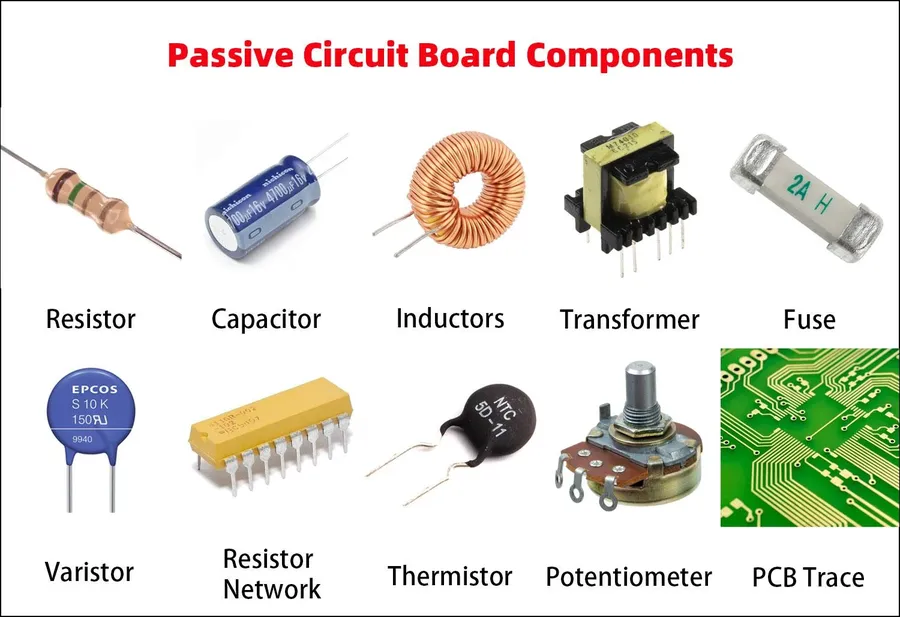
Have you ever wondered how a light switch works or how your phone charger powers up your device? At the heart of these technologies lies the concept of a simple circuit. A simple circuit is the foundation of all electrical and electronic devices, and it's based on a flow of electrical current through a conductive path. In this article, we will demystify the world of simple circuits, and will explore the core components, basic designs, and common examples, all while making the topic both understandable and engaging.
What is a Simple Circuit?

A simple circuit is an electrical pathway that allows for the flow of electrical current. It fundamentally requires three essential components: a voltage source to provide the energy, a conductive path to facilitate the current flow, and a load or resistor to utilize or impede that flow. The behavior of electrical current within a simple circuit can be effectively understood through the analogy of water flowing through a pipe, where voltage is akin to water pressure, current is like the rate of water flow, and resistance is analogous to the pipe's diameter or any constrictions.
In essence, a simple circuit is a complete loop that allows electrons to travel from the voltage source, through the conductive path, and into the load. This loop must be continuous for the circuit to function properly; a break or interruption will halt the current flow. The ability to control and understand the flow of electricity in such a pathway forms the core of the study of basic electronics and electrical engineering.
Key Components of a Simple Circuit
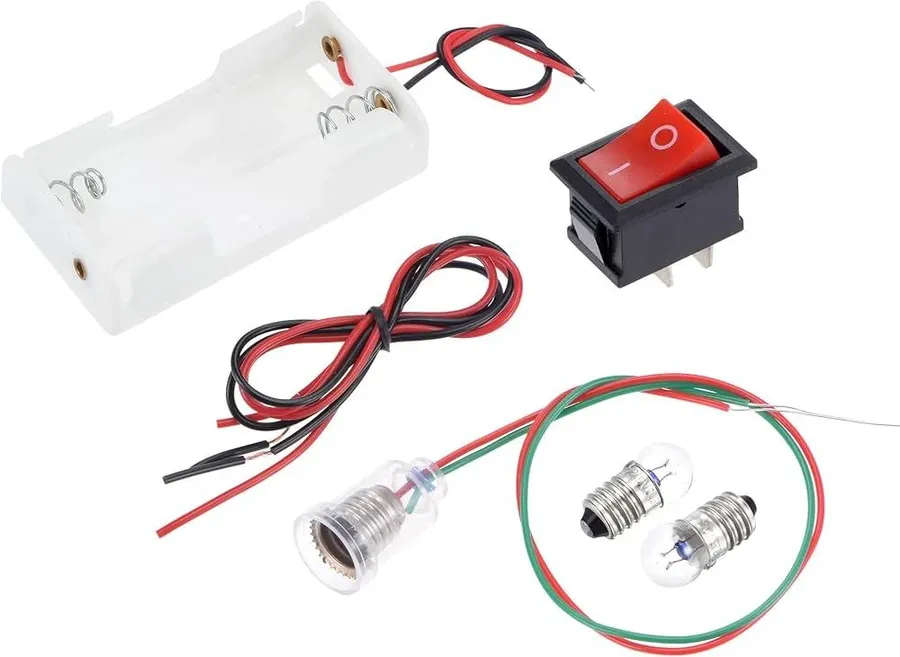
A simple circuit is comprised of three essential components: a voltage source, which provides the electrical energy; conductors, which create a pathway for the current; and a load or resistor, which uses or impedes the flow of current. Understanding these components and their interplay is fundamental to comprehending circuit behavior.
| Component | Description | Role in Circuit | Examples |
|---|---|---|---|
| Voltage Source | Provides the electrical potential difference to drive current. | Acts as the energy pump for the circuit. | Batteries, power supplies |
| Conductors | Materials that allow current to flow with minimal resistance. | Create a path for current to move through the circuit. | Copper wires, metal traces on circuit boards |
| Resistor (Load) | Components that impede or regulate the flow of current. | Consumes energy or provides a specific resistance value in the circuit. | Light bulbs, LEDs, heating elements |
These three components must be connected in a closed loop for current to flow. The voltage source creates the 'push,' the conductors provide the path, and the resistor controls the rate of flow, converting electrical energy into another form. The absence of any component or an open path will break the circuit and stop the current flow.
Types of Simple Circuits: Series and Parallel
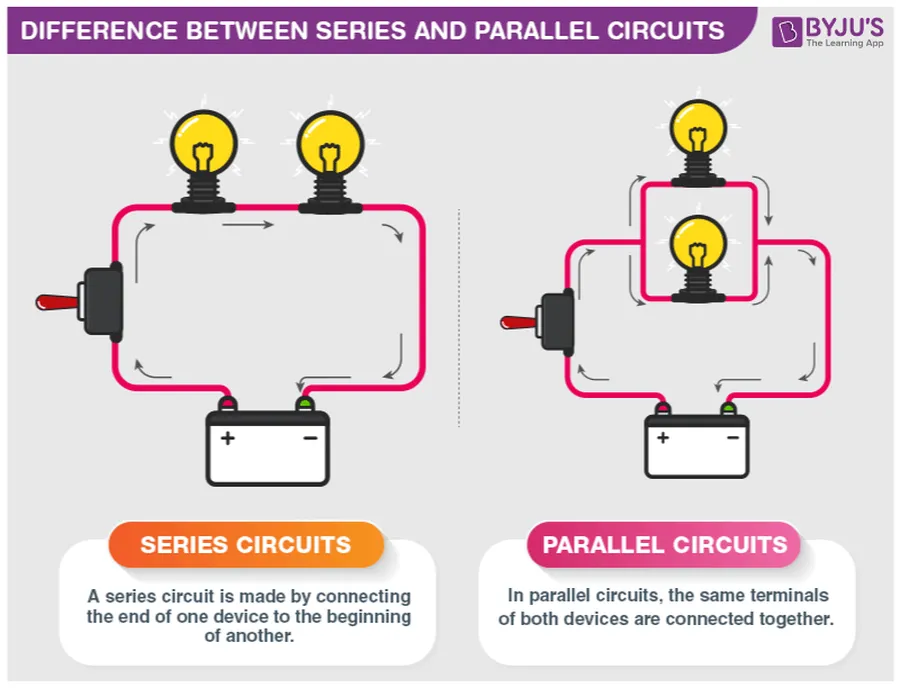
Simple circuits can be categorized into two fundamental types: series and parallel. These configurations dictate how components are connected, which, in turn, profoundly impacts current flow, voltage distribution, and the overall behavior of the circuit. Understanding these differences is crucial for effective circuit design and analysis.
| Feature | Series Circuit | Parallel Circuit |
|---|---|---|
| Current Flow | Same current through all components | Current divides among branches |
| Voltage Distribution | Voltage is divided among components | Same voltage across all branches |
| Total Resistance | Total resistance is the sum of individual resistances (R1 + R2 + ...) | Total resistance is less than the smallest individual resistance (1/Rt = 1/R1 + 1/R2 + ...) |
| Component Failure Effect | If one component fails, the entire circuit breaks | If one component fails, the other branches still function |
| Practical Application | Used in simple circuits where components must function in sequence, such as Christmas lights | Commonly used in household wiring, car electrical systems, and electronic circuits where multiple components operate independently. |
In a **series circuit**, components are connected one after another along a single path. This means that the same amount of current flows through each component. However, the voltage provided by the source is divided among the components. The total resistance of the circuit is the sum of the resistances of each component. A key disadvantage of a series circuit is that if one component fails, the circuit is broken, and the entire circuit stops working.
Conversely, in a **parallel circuit**, components are connected across multiple paths. This arrangement results in the same voltage being applied across each component. The total current from the source is divided amongst these paths. The total resistance of a parallel circuit is less than the smallest resistance in the circuit. A significant advantage of parallel circuits is that the failure of one component does not disrupt the other paths; the circuit continues to function.
Understanding the distinct characteristics of series and parallel circuits is crucial for practical circuit design. These basic configurations serve as the foundation for more complex electrical systems. The choice between series and parallel depends on the specific application requirements, such as the need for consistent current, voltage distribution, or redundancy.
Building a Simple Circuit: Step-by-Step Guide
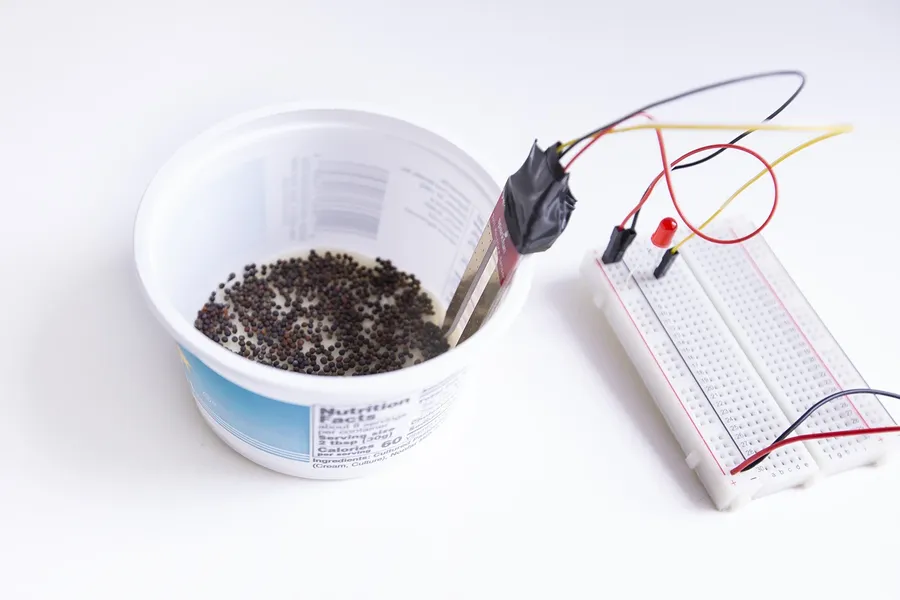
Constructing a basic circuit is a foundational skill in electronics, allowing for a practical understanding of electrical principles. This section provides a detailed, step-by-step guide for building a simple circuit using readily available components, emphasizing safety and offering troubleshooting advice.
- Gather Your Materials
Before beginning, collect the necessary components: a battery (e.g., a 1.5V AA or a 9V battery), a battery holder (if using a 9V battery), insulated connecting wires, a small light bulb or LED (with appropriate resistor if needed), and optionally, alligator clips for easier connections. Ensure all components are compatible with the voltage source. - Connect the Power Source
Place the battery into the battery holder if applicable, ensuring correct polarity (+ and -). Connect one end of an insulated wire to the positive terminal of the battery or battery holder. - Wire to the Load
Attach the other end of the wire connected to the positive terminal to one lead of the light bulb or LED. For an LED, ensure the longer leg (anode) is connected to the positive side. If the LED is not rated for your battery voltage, you must use a resistor of an appropriate value, in series, to limit the current flow and prevent damaging the LED. - Complete the Circuit
Connect another insulated wire to the other lead of the light bulb or LED. Take the free end of the wire and connect it to the negative terminal of the battery or battery holder. Once this connection is made, the circuit is complete, and the light bulb or LED should illuminate if the circuit is correctly wired and the components are functional. - Observe and Test
Observe the light bulb or LED and confirm it is functioning as expected. If the light does not illuminate, review all connections ensuring the contacts are good, polarity is correct for LEDs, and the battery is charged. If the LED is not working, make sure it has an appropriate series resistor or a small power supply. Check for loose wires or broken components. Once working, you can now study the circuit behavior to better understand the basic concepts.
Safety Precautions: Always use batteries with voltage ratings within safe operating ranges for all components used. Never connect a battery directly without a load (like a light bulb or LED), or a resistor. This could create a short circuit. Avoid contact with bare wires while the circuit is energized and always disconnect the power source when making changes to the circuit. Supervise children and new learners when building simple circuits.
Troubleshooting Tips: If the light does not illuminate, double-check the battery polarity, wire connections, and the load to ensure proper connections are made. Verify all components function individually. If using LEDs, always use a series resistor to avoid damage, and make sure the leads are the correct way round. Always ensure all connections are secure.
Simple circuit diagrams use symbols to visually represent the components and their interconnections, like a map for your electrical circuit. We will explore this in the next chapter.
Simple Circuit Diagram
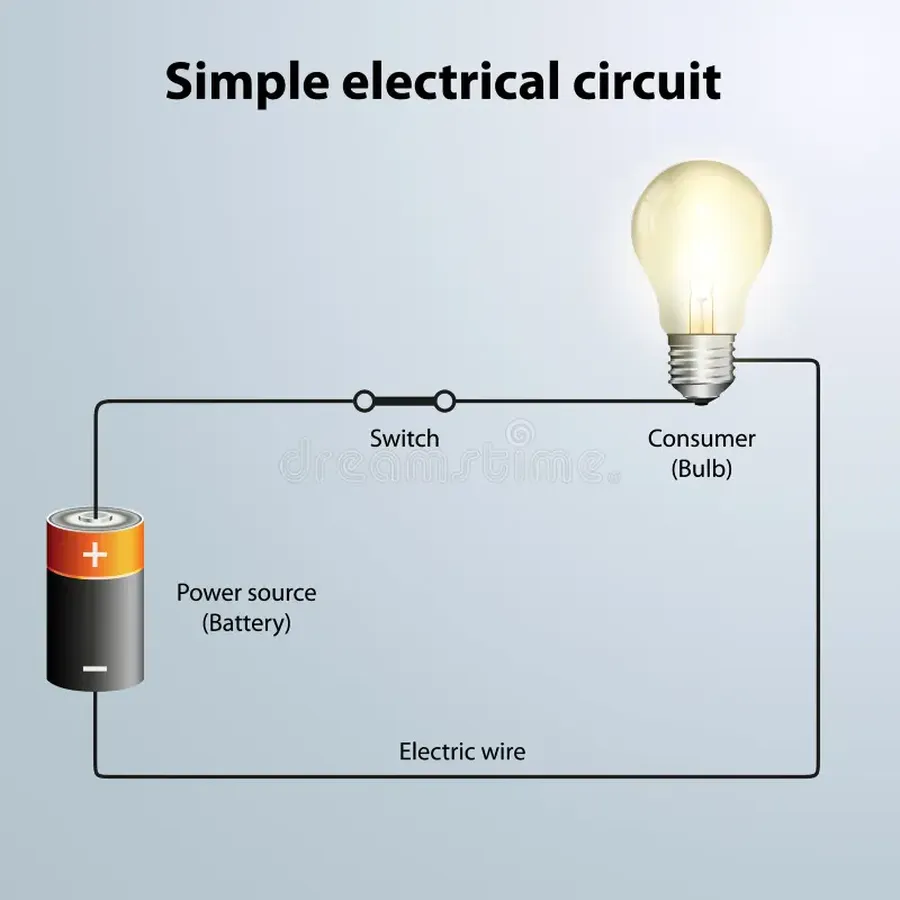
Understanding circuit diagrams is crucial for building and troubleshooting electronic circuits. These diagrams use standardized symbols to represent components, allowing engineers and hobbyists to communicate and construct circuits effectively. This section will introduce common symbols and explain how to interpret them to build real-world circuits, also providing a range of sample circuit diagrams.
A simple circuit diagram is a symbolic representation of an electrical circuit. Instead of drawing components as they physically appear, diagrams use standardized symbols to represent each element. This method simplifies the process of visualizing and constructing circuits, making it easier for anyone familiar with these symbols to understand the circuit's function and layout.
| Component | Symbol | Description |
|---|---|---|
| Battery | A combination of long and short parallel lines | Provides a voltage source. |
| Resistor | A jagged line or a rectangle | Limits current flow. |
| Capacitor | Two parallel lines, one may be curved | Stores electrical charge. |
| Light Bulb | A circle with a cross inside or a stylized light bulb | Indicates the load that is using electrical power and often producing light. |
| LED | A triangle pointing at a bar with an arrowed line | A diode that emits light when current passes through it |
| Switch | A break in a line with a movable arm | Opens or closes the circuit. |
| Wire | A straight line | Connects components, providing a path for current. |
| Ground | Three lines of decreasing length connected to a single line | Reference point of zero potential. |
Reading a simple circuit diagram involves understanding how these symbols are interconnected. Each line represents a wire, and the components are placed along these lines. The path the line takes indicates the current flow path. When the lines form a continuous loop, that suggests the circuit is closed and the current can flow through all components from the voltage source to ground or back to the source.
Diagrams are not only used for the design and construction of circuits but also to explain how they function. By tracing the connections and identifying each component, one can determine the relationship between voltage, current, and resistance within the circuit. This understanding is essential for both creating new circuits and for fixing existing ones.
Here are some sample circuit diagrams:
A simple series circuit with a battery, switch, and a light bulb.
A simple parallel circuit with a battery, switch, and two light bulbs.
Common Examples of Simple Circuits in Everyday Life
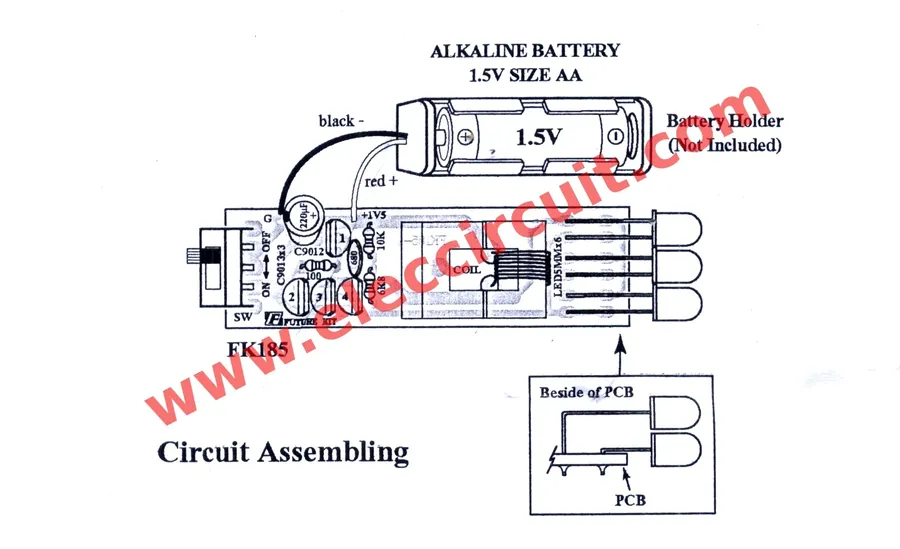
Simple circuits, though fundamental, are ubiquitous in our daily lives, powering a variety of devices we often take for granted. Understanding these basic implementations provides insight into the broader world of electronics. Devices such as flashlights, basic home lighting systems, and simple electronic toys all rely on the principles of basic circuitry.
- Flashlights
A flashlight operates using a simple series circuit. The battery serves as the voltage source, providing the electrical energy. The switch is a crucial component, enabling the user to complete or break the circuit path, thereby controlling the flow of current to the light bulb. The light bulb itself acts as the load or resistor, converting electrical energy into light and heat. - Basic Home Lighting Systems
While more complex than a single flashlight, basic home lighting systems operate on similar principles. The power grid provides the voltage source and wires act as the conductive path. A switch completes the circuit when turned on, allowing current to flow through the light fixture, which serves as the load. Multiple lights are often connected in parallel circuits, allowing each light to operate independently of the others. - Electronic Toys
Many electronic toys, especially those designed for younger children, employ simple circuits. These circuits are typically designed for safety and may incorporate LEDs and small motors. A battery provides the power, while a switch or a sensor, such as a button, controls the circuit. The load might be an LED, a small speaker or a motor that makes the toy operate.
In each of these examples, the core principle of a closed loop is observed, ensuring electrical current can flow uninterrupted from the power source through the conductive path and the load before returning to the power source. These simple examples highlight the fundamental nature of simple circuits in our daily lives.
Simple Circuit Projects for Beginners
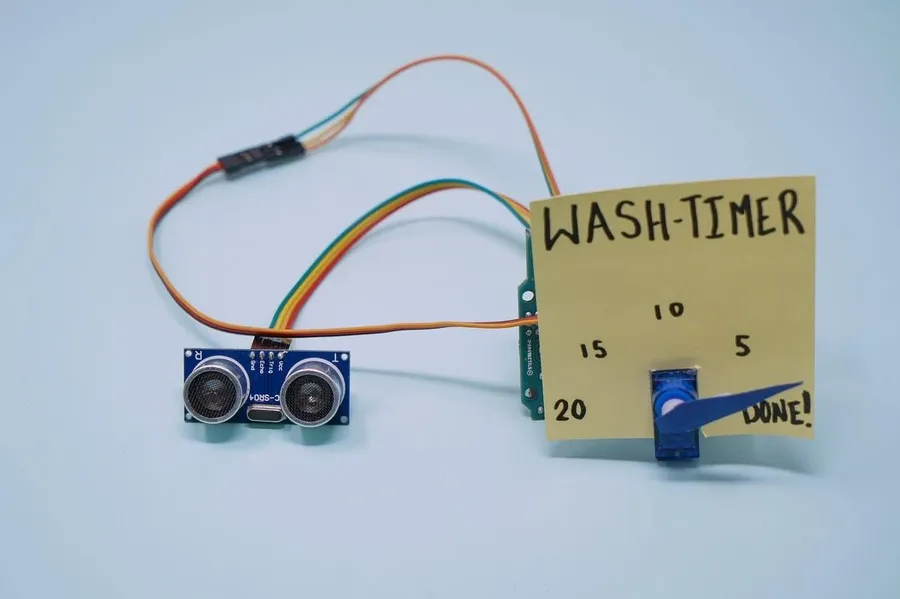
Diving into hands-on projects is an excellent way to solidify understanding of simple circuits. This section presents several beginner-friendly projects that demonstrate practical applications of the concepts discussed earlier. These projects utilize readily available components and offer a tangible learning experience.
- Simple LED Circuit
This is the most fundamental project, demonstrating how to power an LED using a battery and a resistor. It illustrates the basic closed-loop principle and the importance of current-limiting resistors to protect the LED. Components needed include a battery, a resistor, an LED, and connecting wires. Instructions involve connecting the components in a series circuit, ensuring proper polarity of the LED. - Touch Sensor Circuit
This project explores how a simple touch can complete a circuit. Utilizing the skin's conductivity to close a circuit, it demonstrates the sensitivity of electrical circuits. Required components include a battery, a resistor, an LED (or buzzer), and two exposed metal contacts. Instructions involve constructing a circuit where touching the two metal contacts allows current to flow and activates the LED or buzzer. - Simple Temperature Monitor Circuit
This project utilizes a thermistor, a temperature-sensitive resistor. Changes in temperature alter the thermistor's resistance, affecting the overall current flow in the circuit. The project involves a battery, a thermistor, a resistor, and an LED. As temperature changes, the LED's brightness will vary providing a rudimentary temperature indicator. Proper circuit configuration is required to establish a baseline and understand the changes in LED brightness. - Rain Alarm Circuit
This project uses water's conductivity to trigger an alarm. When water bridges two conductive contacts, it completes the circuit. The required components are a battery, a resistor, a buzzer, and two exposed metal contacts that will be separated by a small gap. Instructions involves configuring the circuit so that when water bridges the contacts, the circuit is completed, activating the buzzer.
These projects serve as foundational experiences. It's crucial to exercise caution when working with circuits, particularly with batteries and electrical components, and to always double-check circuit diagrams before connecting components. Begin with the simplest project such as the LED circuit and progress to other projects only after gaining confidence. Each project provides a unique learning experience, reinforcing theoretical knowledge with practical implementation.
Frequently Asked Questions About Simple Circuits
This section addresses common queries regarding simple circuits, providing concise and authoritative answers to help clarify key concepts and applications.
- What are the basic requirements for a simple electrical circuit?
A simple circuit fundamentally requires three key elements: a voltage source (providing electrical potential), a conductive path (usually wires) to allow current flow, and a load or resistance (a component that utilizes the electrical energy). All these must form a closed loop for current to flow. - What constitutes the simplest circuit to build?
The simplest circuit is typically comprised of a battery (voltage source), a single wire (conductive path), and a small light bulb or an LED (load). The wire connects the battery's terminals to the light bulb, thus completing the circuit and illuminating the light. - What are examples of fun circuits for kids to explore?
Engaging and safe circuit projects for children include building a simple LED circuit, creating a switch using a paper clip, constructing a basic series circuit to illuminate several small lights, or making a simple touch-activated circuit. These are hands-on activities are very effective in demonstrating basic electrical concepts. - How does current flow within a simple circuit?
Electrical current, the flow of electrons, moves from the negative terminal of the voltage source, through the conductive path (wires), to the load (e.g., light bulb) where electrical energy is converted to another form, then back to the positive terminal of the voltage source. The current flows when this closed loop exists. - How does the resistance in a simple circuit impact the current flow?
Resistance, measured in ohms, impedes the flow of electrical current. According to Ohm's Law (V = IR, where V is voltage, I is current, and R is resistance), increasing the resistance decreases the current flow for a given voltage source and vice-versa. This relationship is critical in determining the characteristics of a circuit. - What is the primary function of a voltage source in a circuit?
The voltage source, such as a battery, is responsible for providing the electrical potential difference that drives the flow of current through the circuit. It maintains a potential difference that ensures that electrons move from the source to the load and back to the source and thus allows electrical work to be done. - Why is a closed loop necessary for a circuit to function?
A closed loop provides a continuous and uninterrupted path for electrons to flow from the voltage source, through the components, and back to the source. If the loop is open or interrupted, the circuit breaks, and the current ceases to flow preventing any electrical operation.
Understanding simple circuits is a gateway to grasping more complex electronics. By grasping these basic principles and building simple projects, you can build a foundation for more advanced electronics and circuits and start to appreciate how our daily devices work. The journey begins with these small, simple circuits, which form the foundations of the technology around us and power our modern world. Consider your ability to now create a simple circuit - a light from a simple battery. You’ve got the power!
 AnyPCBA
AnyPCBA